Yes, you can easily cook butternut squash using just your microwave! And, with microwave butternut squash, you get the best of both worlds: delicious flavor + quick and easy prep. With this comprehensive guide on how to cook butternut squash in the microwave, you will learn three different methods and the benefits and applications of each.
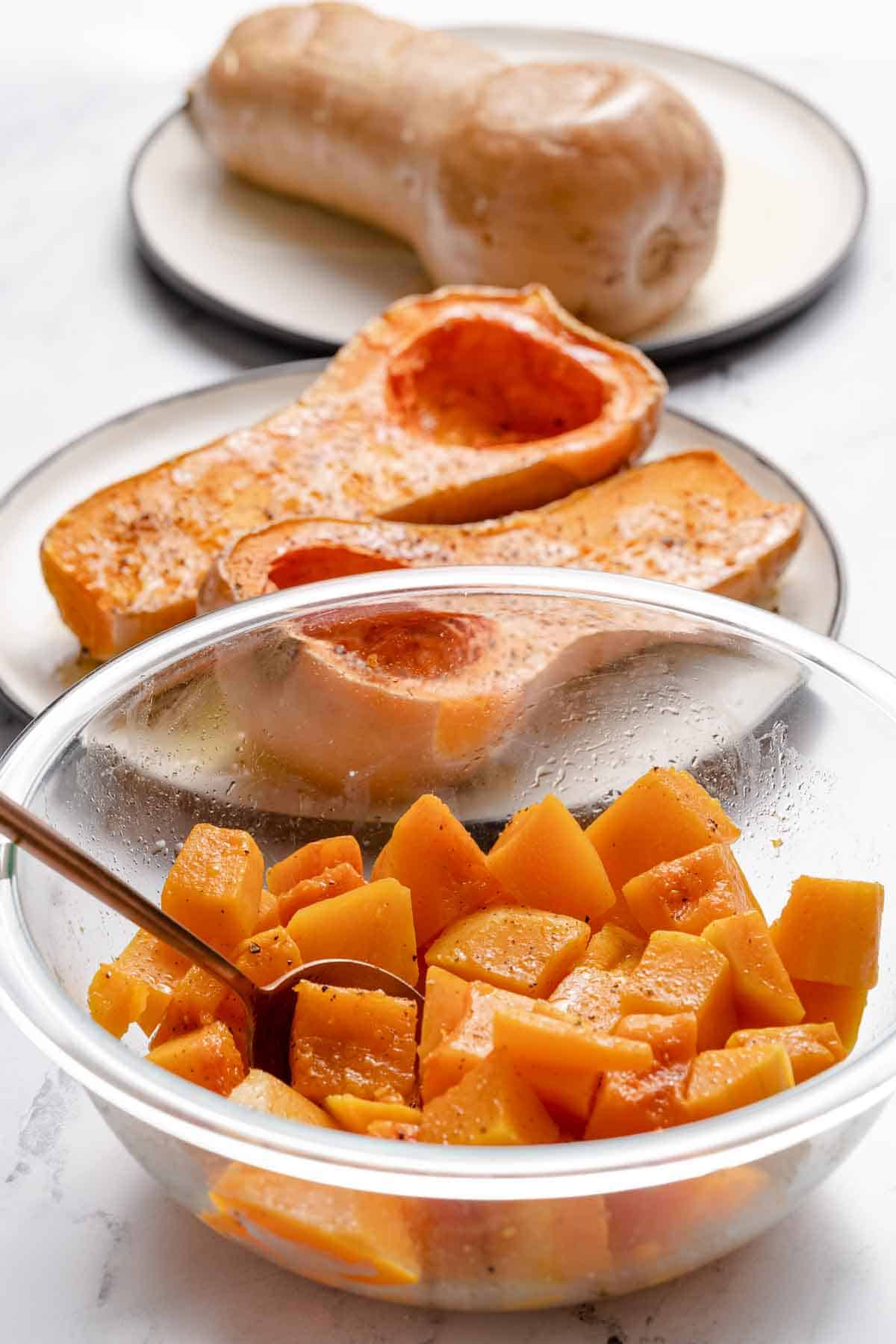
Note: this post was originally published in 2021, and updated in 2023 with improved instructions.
Butternut squash makes a fantastic side dish for practically any dinner. But, if you're anything like me, maybe you've forgotten to pre-heat the oven, or, don't have time to roast the squash even if you had!
Here's where the microwave can be a big help. You can save tons of time and effort by cooking butternut squash in the microwave, and with no need to heat up your whole kitchen with a hot oven.
In this post, I'll teach you three different ways on how to cook butternut squash in the microwave: the cubed squash method, the halved squash method, and the whole squash method.
Each method has its benefits and uses. So, depending on the time you have and your preferences, you'll be sure to find the perfect butternut squash microwave method to complete your meal.
For a full rundown of the benefits and applications of each method, be sure to check out the section below: Comparing microwave methods for butternut squash!
Jump to:
Recipe ingredients

Ingredient notes
Butternut squash: these microwave recipes are designed for a butternut squash that is medium-sized, about 2 ¼ - 2 ¾ pounds (1 - 1 ¼ kg). For the cubed butternut squash method, you can also buy pre-cubed squash if you prefer.
Butter/oil: this is to add some extra flavor in the cubed squash recipe, and for the halved butternut squash method, to keep the surface moist while microwaving. You can use either butter or oil; the choice is yours.
Step by step photos
As I mentioned, I'll be discussing three different ways on how to cook butternut squash in the microwave. Here, I'll go through each microwave butternut squash method, one by one - starting from the most effort to the least. First up: cubed butternut squash!
(And, if you would rather see a brief slideshow of these steps, please check out my web story!)
Method 1: cubed butternut squash
1. First, peel the skin from the butternut squash. As I mentioned in my post for maple glazed squash and apples, you can do this with either a knife or a vegetable peeler.
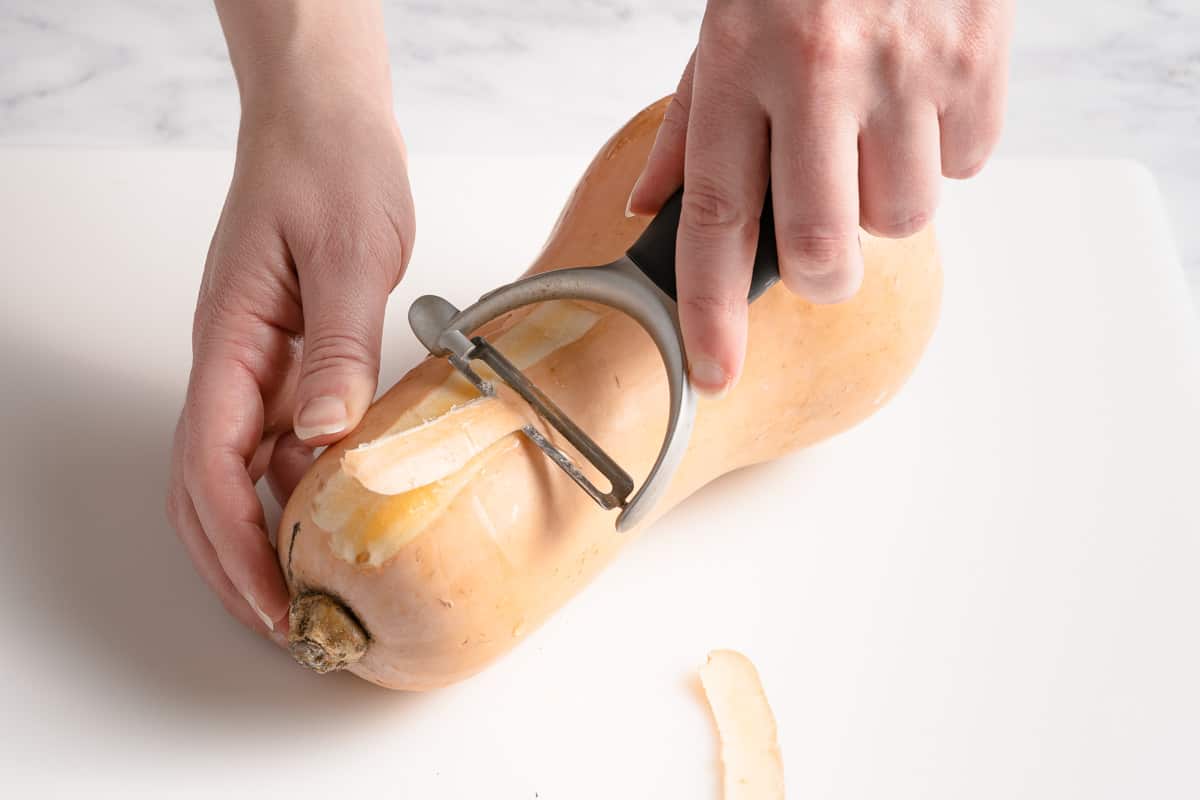
I think using a peeler is easier, but if you prefer to use a knife, cut the squash in half first, right before the base starts to flare out. This will make peeling the squash much easier to manage.

2. Next, cut the squash in half and scoop out the seeds. My favorite way of doing this is with a grapefruit spoon!

3. Once the seeds have been removed, cut the squash into 1 inch (2.5 cm) strips. Then, cut each strip into 1 inch (2.5 cm) chunks. Place the chunks in a microwave-safe bowl.

4. Season the squash chunks with salt and pepper to taste. Toss the pieces around to ensure the seasoning is evenly distributed.

5. If you like, you can add a few pats of butter (this is optional).
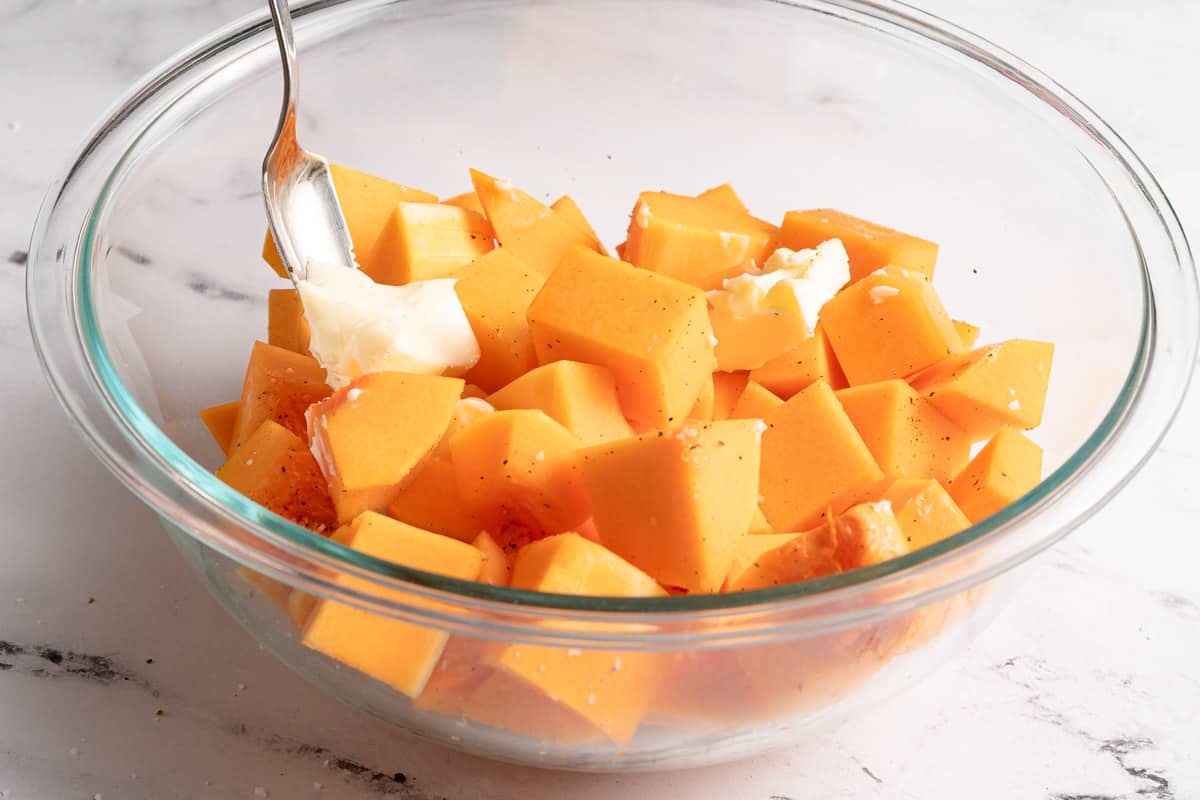
6. Next, sprinkle in about 1 tablespoon (15 ml) water overtop the squash.

7. Now, cover the bowl with a piece of microwave-safe plastic wrap, leaving about a 1 inch (2.5 cm) gap open to serve as a vent. Also make sure there is at least a 1 inch (2.5 cm) space between the top of the squash and the plastic wrap.
Alternatively, you can use a vented lid designed for microwave use.
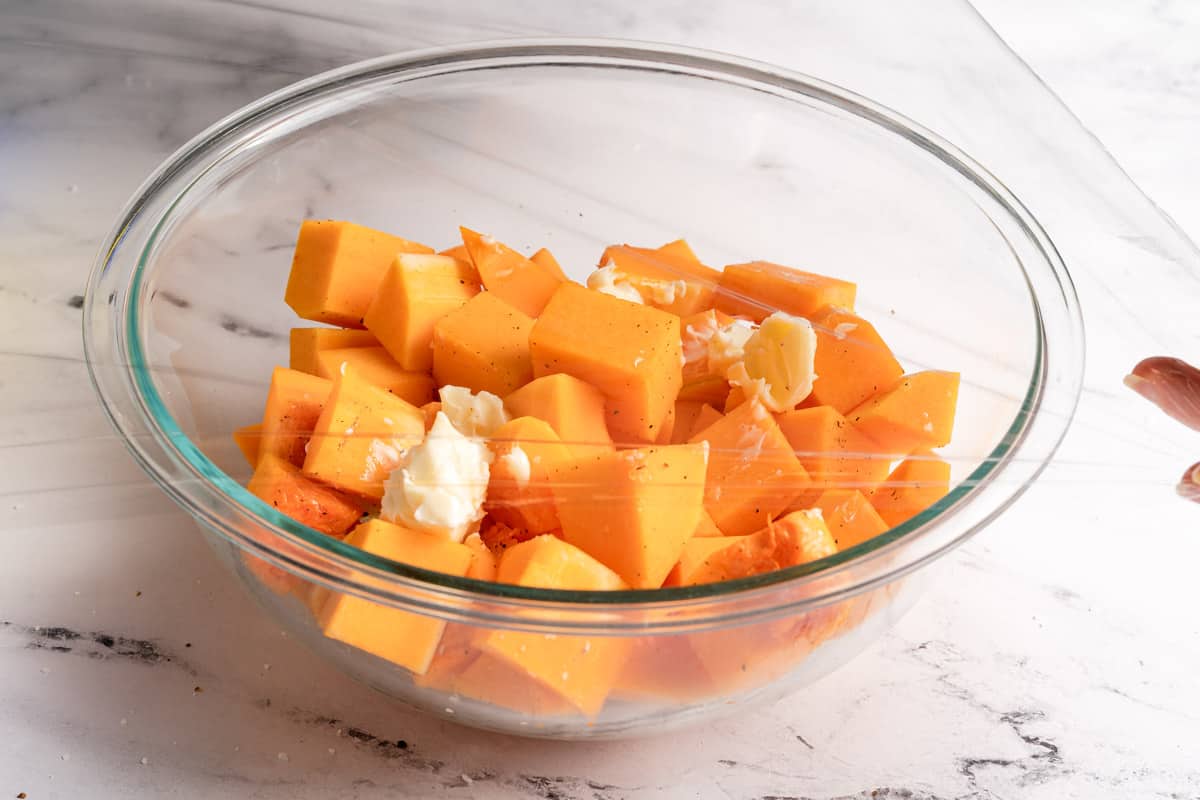
8. Microwave the squash on high for 5 minutes. Then, remove the cover (there will be steam and hot water droplets trapped underneath so do this carefully!). Stir the butternut squash, replace the cover, and microwave for another 5 minutes on high, or until the squash is fork-tender.
At this point, you can taste a piece of squash and add more salt, pepper, and/or butter or oil if you like, and enjoy!
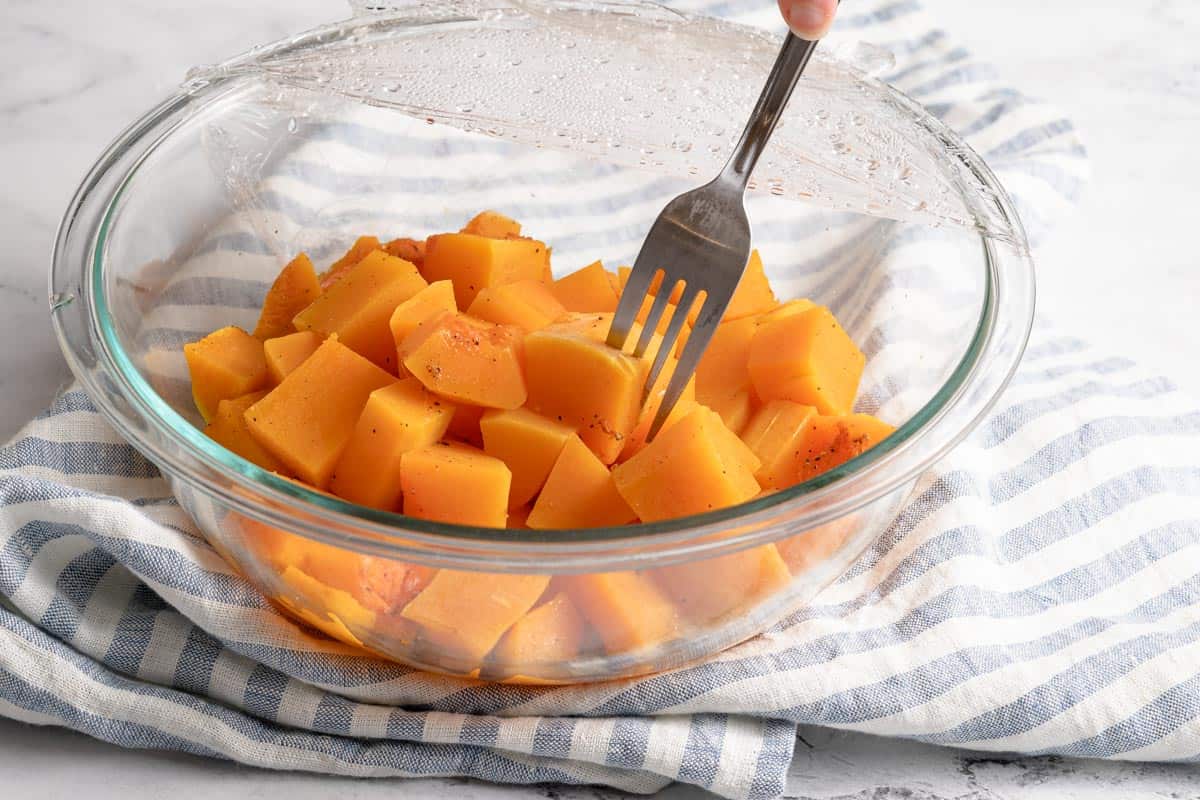
Method 2: halved butternut squash
The next method to microwave butternut squash is for a halved squash. This requires much less prep than the cubed method.
1. The first step for this method is to cut the stem off the butternut squash. Then, you can take a little slice off the rounded part of the squash. The only reason for this is so the squash will lay flat on its side, making it more stable when cutting it in half.

2. So, the next step is to lay the squash down flat on its side. Cut the squash in two equal pieces lengthwise.

3. Then, scoop out the seeds with a small spoon.

4. Place both squash halves on a microwave-safe plate. Drizzle the cut halves with oil or melted butter. Sprinkle them with salt and pepper to taste.
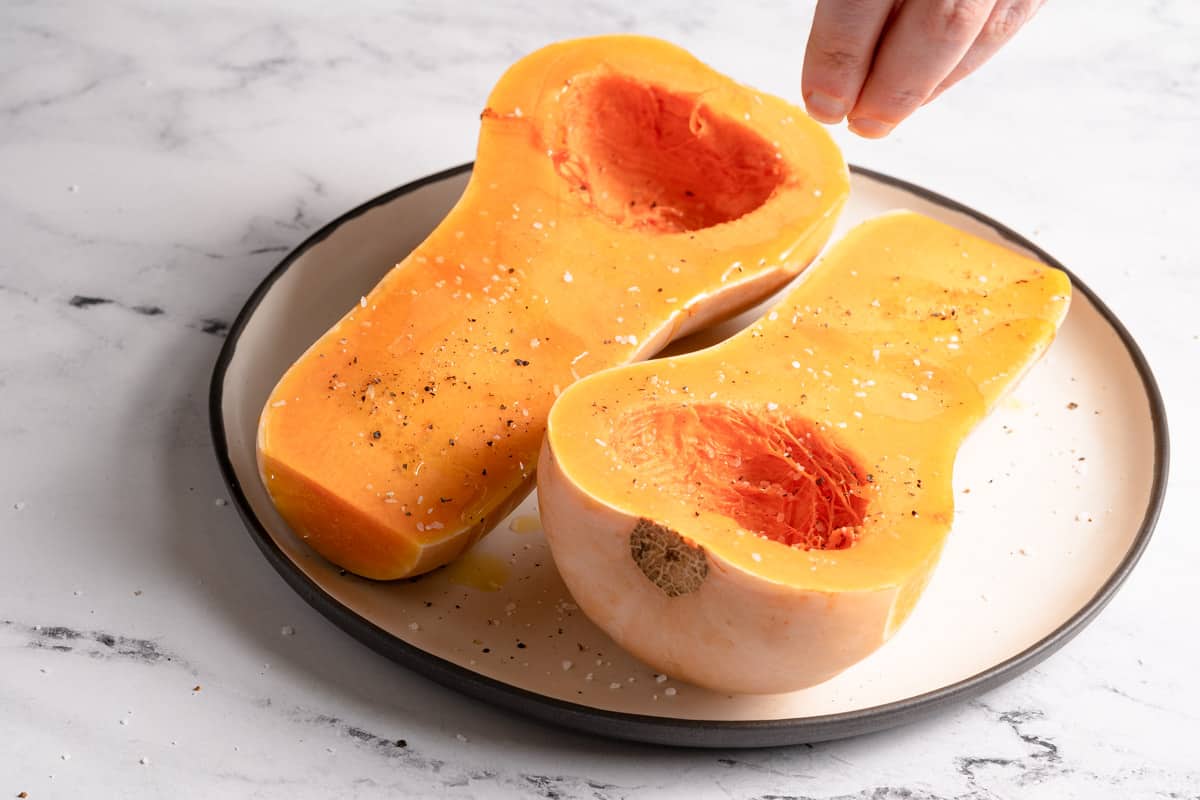
5. To help cut down on spatter in the microwave, cover the squash halves with a paper plate or paper towel. Then microwave the squash for 14 - 16 minutes, or until the squash can be easily pierced with a fork.
You can either cut each squash piece in half again to make 4 portions, or, enjoy an entire half by yourself if you really love squash! I like to eat the squash like a baked potato, right out of the peel. Or, you can scoop out the flesh and mash it up with more butter or oil, salt and/or pepper.
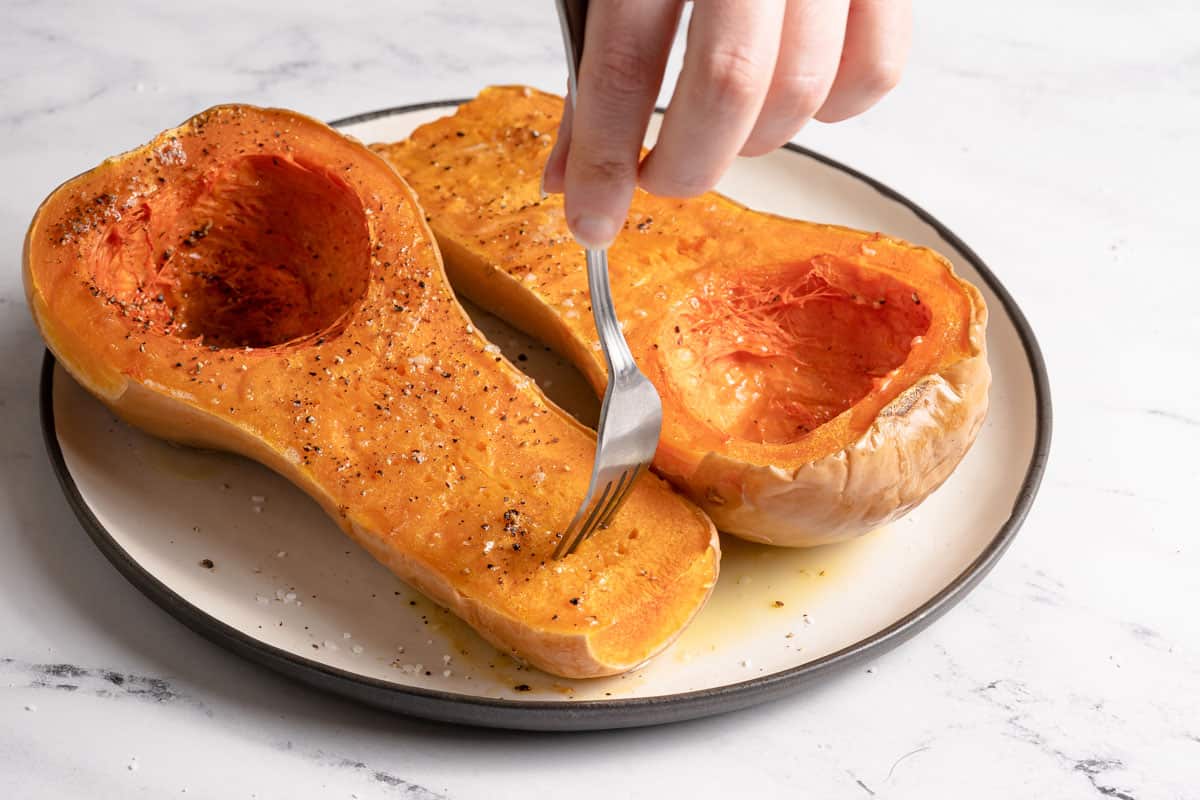
Method 3: whole butternut squash
Finally, here is how to cook a butternut squash in the microwave, using the easiest option: whole butternut squash. This requires the least prep time of all three methods.
1. The first step for this method is to pierce the squash in multiple places all over with a fork. Make sure to pierce the flesh at a depth of at least ⅓ inch (8.4 mm) or greater.
If you're having trouble making deep punctures with the fork, you can use the tip of a paring knife instead.
This first step is very important, because these vent holes will allow steam to escape during cooking so the squash doesn't explode in the microwave!

2. Then, all you have to do is place the squash on a microwave-safe plate. Microwave the squash for 14 - 16 minutes on high, or until you can pierce the squash easily with a fork.

To serve the squash, carefully cut it in half (it will be steamy inside!). Scoop the seeds out with a spoon.
Now you can season it how you like and eat it in the same ways as described in the above method, by either eating it as-is (baked potato style!), or scooping out the flesh and mashing it.

Tips and tricks
- Since microwaves vary in power, you may need to adjust the cook times listed in the recipe slightly. For reference, I tested this recipe with a 1000 watt microwave.
- As I mentioned in the Step by step photos section above, I like to use a grapefruit spoon to scoop out the seeds. The serrated edge makes it really easy to dig out those stringy bits. If you don't have a grapefruit spoon, I've also had good results using a small metal measuring spoon.
- Because the raw squash is very dense and can be difficult to cut through, it really helps to use a large, sharp knife, rather than a small knife like a paring knife.
- When removing the cover from the cubed squash after cooking, be careful to avoid the trapped steam inside the bowl and hot water droplets clinging to the plastic wrap or lid.
- Likewise, when cutting open the whole squash after cooking, there will be some steam trapped inside. So, just use caution to avoid burning your hands or face!
Comparing microwave methods for butternut squash
Above I explained how to cook butternut squash in the microwave, using three different methods. But, you may be asking yourself: what is the BEST method for making microwave butternut squash?
So, now let's dig into the benefits of each so you can decide which one you would like to try.
Cubed butternut squash
- This method is good if you enjoy eating actual pieces of squash, rather than squash scooped from the peel or mashed. Because the cubes are cut on the larger size (about 1 inch, or 2.5 cm), they hold their shape well even after cooking.
- It's also easier to introduce seasonings from the beginning because there is more surface area.
- This would also be a good application for pre-cut squash cubes. (If your cubes are smaller than 1 inch (2.5 cm) however, you will need to reduce the cook time.)
- The biggest downside is the additional prep time in peeling and cubing the squash.
Halved butternut squash
- This is by far my favorite method. As the moisture escapes from the cut sides of the squash during cooking, the flavor and texture concentrates and leads to a firmer, more flavorful squash when compared to methods 1 and 3, which use steam to cook the squash.
- There is also a lot less prep involved than the cubed squash method. This is the best way, in my opinion, if you like to eat the squash from the shell, like a baked potato.
Whole butternut squash
- The biggest benefit to this method is how easy it is. Prep will take you literally 1 minute or less.
- The whole squash method also results in extremely moist, tender squash that would be best suited to mashing. So, if you like mashed squash, this may be your go-to method!
In summary, as you can see, there are varying benefits and considerations when choosing a microwave butternut squash method. The best choice for you will depend on how much time you have, and how you like to enjoy your squash. Choose your favorite, or try all three!
Serving suggestions
When using these microwave butternut squash techniques, you don't have to stick with only the salt and pepper I listed in the recipe. Rather, you can feel free to include other spices and herbs to suit your tastes.
Here are some ideas on how to dress up your butternut squash, as well as a few ideas on what to serve alongside:
- Spices that pair well with butternut squash: cinnamon, smoked paprika, cayenne, rosemary, sage, or thyme. You can sprinkle these on before cooking (for the cubed or halved butternut), or afterwards (for the whole butternut).
- After the squash is finished cooking, you can also add: a drizzle of honey or maple syrup, a dash of brown sugar, and/or a sprinkle of flaky sea salt.
- Here are some main course recipes that would pair well with butternut squash:
Recipe FAQs
The cook times listed for the three methods are for a medium butternut squash that weighs between 2 ¼ - 2 ¾ pounds (1 - 1 ¼ kg). If you want to use a squash that is a little bit larger or smaller, you will need to adjust the cook times either up or down.
I wouldn't try to go for a squash that is much larger than 3 pounds, particularly for the halved and whole squash methods. I can't say it won't work, but I just haven't tested these methods with that large of a squash so I can't say how the results will be.
If you want to cook a butternut squash on the larger side using method 2 (halved butternut squash), you can also try cutting it into quarters, rather than in half, to save time on cooking. Just check the squash a few minutes earlier than listed in the recipe.
Yes, you can absolutely microwave butternut squash with the skin on. This is a super easy, low effort technique. You can either do this by cutting the unpeeled squash in half, or, even microwaving it whole (but poking holes in the skin for the steam to escape is critical when microwaving whole!).
Please see the recipe card or blog post for more detailed information on how to microwave butternut squash with the skin on.
Yes, you can use the microwave to cook not only butternut squash, but also various other hard winter squashes. If microwaving the squash in cubes, kabocha or honeynut squash would be good substitutes for the butternut squash.
When microwaving the squash either cut in half or whole, you can give acorn squash or carnival squash a try. But, these tend to be a little smaller than butternut, so depending on the weight you may need to reduce the microwave time accordingly.

Related recipes
If you’ve tried this recipe, please leave a star rating and/or review in the comments section below, I would love to hear from you! You can also follow me on Facebook, Instagram and Pinterest. And sign up for my weekly newsletter to get recipes delivered straight to you!
Print📖 Recipe
Microwave Butternut Squash
It's never been easier to prepare butternut squash! With these three simple methods, you can find the perfect way to prepare butternut squash in the microwave.
- Prep Time: 8 minutes
- Cook Time: 10 minutes
- Total Time: 18 minutes
- Yield: 4 servings 1x
- Category: side dish
- Method: microwave
- Cuisine: American
- Diet: Gluten Free
Ingredients
- 1 medium butternut squash, between 2 ½ - 2 ¾ pounds (1 - 1 ¼ kg)
- 1 - 2 tablespoons (14 - 28 g) butter or olive oil
- salt and ground black pepper, to taste
Instructions
Method 1: cubed butternut squash
- Peel the skin off the butternut squash with a vegetable peeler or knife. If using a knife, it will be easier to peel the squash if you cut it in half crosswise first, right before it begins to curve outwards. (See note 1.)
- Cut the squash in half lengthwise and scoop the seeds out with a small spoon (a grapefruit spoon works great for this!).
- Cut the butternut squash into 1 inch (2.5 cm) cubes.
- Place the cubes in a large microwave-safe bowl. Season the butternut squash cubes with salt and pepper to taste. Toss the cubes to distribute the seasoning.
- Add 1 - 2 tablespoons (14 - 28 g) butter or olive oil to the bowl (optional).
- Drizzle 1 tablespoon (15 ml) water overtop the butternut squash.
- Cover the bowl with microwave-safe plastic wrap, leaving at least a 1 inch (2.5 cm) gap between the top of the squash and the plastic. Also, leave at least a 1 inch (2.5 cm) space uncovered to serve as a vent. Alternatively, cover the bowl with a vented lid designed for use in the microwave.
- Microwave the butternut squash on high for 5 minutes. Carefully remove the plastic wrap or lid (there will be steam in the bowl and hot water droplets trapped under the lid!). Stir the squash, and replace the plastic wrap/cover as described in step 7.
- Microwave for an additional 5 - 6 minutes on high, or until the butternut squash is tender (you can test this by piercing a piece of squash with a fork; if the fork slides in with little resistance, the squash is done). (Again, use caution when removing the lid due to accumulated steam in the bowl and/or hot water droplets trapped under the lid.)
- Gently stir the squash. Taste the squash and season with additional salt and pepper if needed.
Method 2: halved butternut squash
- Cut the stem off the butternut squash. Cut a small, shallow slice off the side of the rounded portion of the squash (this is optional but will make the squash more stable when cutting it in half). Lay the squash on its side with the flat cut portion down.
- Cut the squash in half lengthwise. Scoop the seeds out of the squash with a small spoon.
- Place the squash halves on a microwave-safe plate, flesh side up. Drizzle the squash with 2 tablespoons oil or melted butter. Sprinkle the squash with salt and pepper to taste.
- To cut down on spatter, cover the squash with a paper plate or paper towel. Microwave the squash on high for 15 - 17 minutes, or until the squash is tender (you can test this by piercing the squash with a fork; if the fork slides in with little resistance, the squash is done).
- To serve, you can cut each squash half in two, for a total of 4 servings (or, for 2 large servings, serve as-is). Then, enjoy it like a baked potato, scooping out the flesh with a spoon, with additional toppings like a pat of butter or a sprinkle of cinnamon and brown sugar. Or, you can scoop the flesh out into a serving bowl and mash it with additional butter or oil (optional), and season with more salt and pepper (if needed) and/or additional seasonings of your choice.
Method 3: whole butternut squash
- Pierce the whole butternut squash with a fork multiple times, all over the squash. Make sure the punctures are at least ⅓ inch (8.4 mm) deep or more. This step is very important, because without places for the steam to escape during the cooking, the squash could explode in the microwave. If you aren't able to make deep punctures with the fork, you can also use the tip of a paring knife if that's easier.
- Place the squash on a microwave-safe plate.
- Microwave the squash on high for 14 - 16 minutes, or until the squash is tender (you can test this by piercing the squash with a fork; if the fork slides in with little resistance, the squash is done).
- Cut the squash in half lengthwise (careful, the inside will be steamy!). Scoop the seeds out of the squash with a small spoon.
- Serve the squash in the peel or scooped out into a bowl and mashed as described in step 5 of method 2 above.
Notes
If you did not cut the squash in half crosswise before peeling, you can cut a small, shallow slice off the side of the rounded portion of the squash after it's peeled. This will make the squash lay flatter, so it will be more stable when making that big lengthwise cut.
The prep and cook times listed at the top are for method 1, cubed butternut squash. The prep time for method 2 is about 3 minutes, and for method 3, about 1 minute. Please follow the individual cook times listed in the recipe instructions for each method.
The cook times listed are for a medium butternut squash weighing between 2 ¼ - 2 ¾ pounds (1 - 1 ¼ kg). You will need to adjust the cook times if your butternut squash is a little larger or smaller, or even just depending on your microwave. For reference, I tested this recipe with a 1000 watt microwave.
I don't advise using a squash that is much larger than 3 pounds, particularly for the halved and whole squash methods. I haven't tested these methods with a squash that large so I can't say how the results would be.
When removing the cover from the cubed squash after cooking, be careful to avoid the trapped steam that has accumulated inside the bowl, and hot water droplets clinging to the plastic wrap or lid. Likewise, when cutting open the whole squash after cooking, there will be some steam trapped inside, so just use caution to avoid burning your hands or face.
The nutrition information below was calculated to include 2 tablespoons unsalted butter and ¼ teaspoon salt. The nutrition information listed is an estimate provided by an online nutrition calculator, and should not be considered a substitute for professional medical, health, or nutritional advice. See our full disclosure policy.
Nutrition
- Serving Size: ¼ recipe
- Calories: 177
- Sugar: 6.2 g
- Sodium: 159 mg
- Fat: 6 g
- Saturated Fat: 3.7 g
- Carbohydrates: 32.7 g
- Fiber: 5.6 g
- Protein: 2.9 g
- Cholesterol: 15 mg



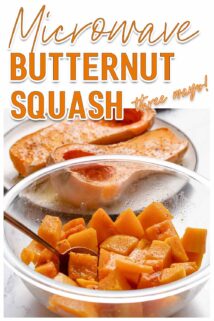
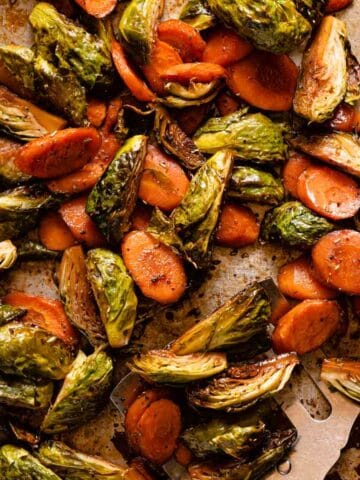
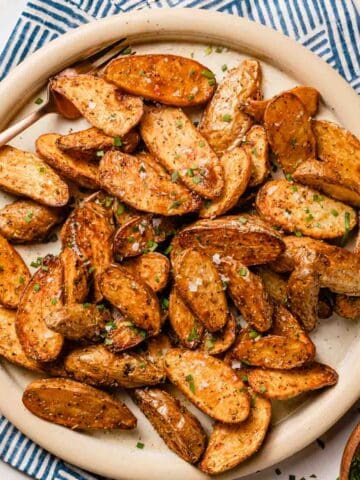
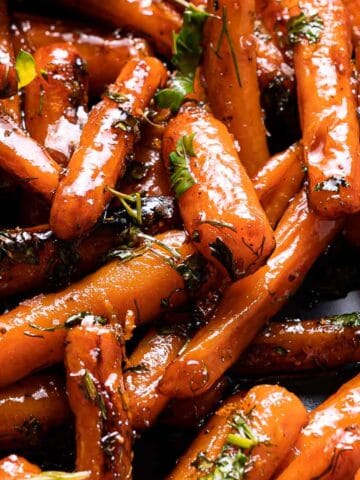
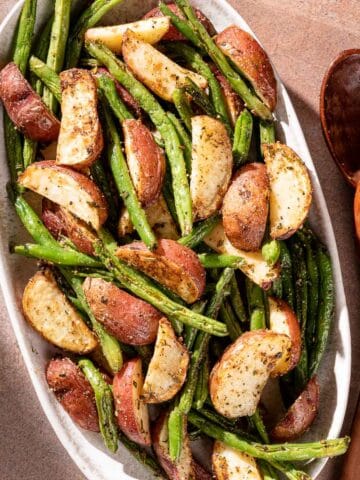
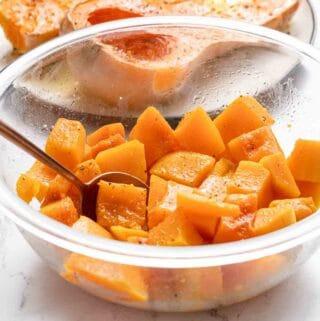




Sandhya Ramakrishnan says
I would have never thought of using the microwave to cook my butternut squash. We grow our own squash and they are as huge as what we buy from the stores. I cooked on whole last evening and it was so perfect.
Kate says
That is wonderful, I'm so glad that the whole squash recipe worked for you! It really is the easiest way to cook butternut squash 🙂
veenaazmanov says
Very informative and a useful post. Makes life easier and helpful.
Kate says
Thank you so much! I am always looking for ways to make life a little easier 🙂
Collrrn says
Thanks for all these great tips. The microwave is a great way to cook butternut squash in a hurry and it was great for making soup!
Kate says
So glad you found it helpful! And yes you're totally right! This would be a super easy way to get squash puree to use in soups 🙂
LaKita says
I’ve never tried making butternut squash in the microwave before and your instructions made me realize how easy it is to make!! This is sure to be my new preferred way to make it 🙂
Kate says
Thank you LaKita I hope you enjoy it!
Cathleen says
Wait.. why didn't I think of this?? Thank you so much for sharing, I have a butternut squash that needs using, so now I know exactly what I'm going to do with it 🙂
Kate says
Thanks Cathleen, I'm glad you found this helpful 🙂
Jamie says
This butternut squash recipe looks amazingly delicious and very tasty! Loving the presentation makes it so enticing and tempting! Many will definitely enjoy this!
Kate says
Thanks Jamie I'm glad you like the recipe!
Amy Liu Dong says
One of the most delicious, healthy, and easy side dishes to make.
I love it so much!
Kate says
Thanks Amy I'm really happy that you enjoyed the recipe! 🙂
Katie Crenshaw says
Great tips and instructions. They made cooking butternut squash so much easier than cooking it in the oven! It came out perfect.
Kate says
I'm so glad Katie that the recipe worked out for you! Thanks for sharing!
Tristin says
This was so easy thanks to your step by step photos! It cooked so much quicker than in the oven.
Kate says
Thanks Tristin, I'm glad you found the recipe easy to follow! And yes the microwave saves so much time over the oven!
Jenny says
It doesn’t get any easier than this! And I like the cubed option. Butternut squash rocks! Thanks for sharing your microwave Butternut Squash recipe.
Kate says
Thank you Jenny. The cubed option is great especially if you buy pre-cubed chunks from the store, saves so much time!